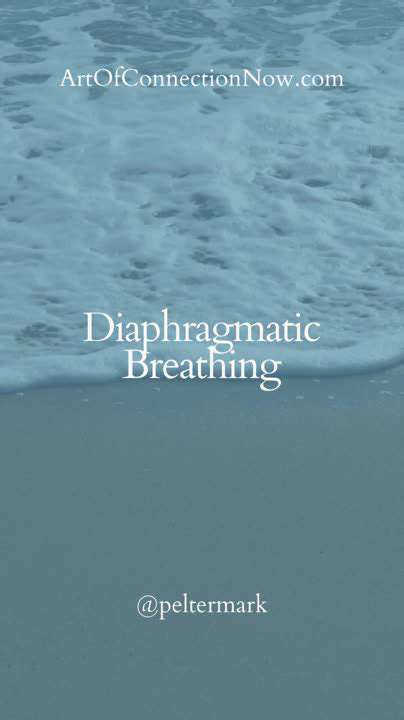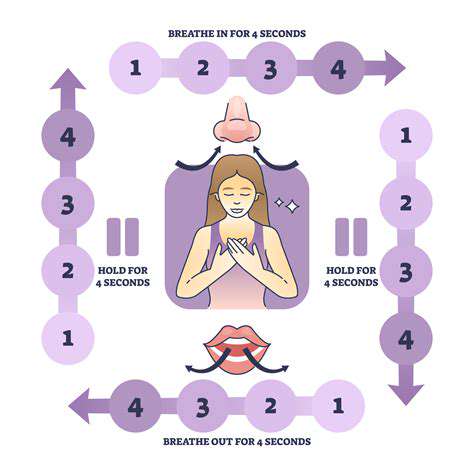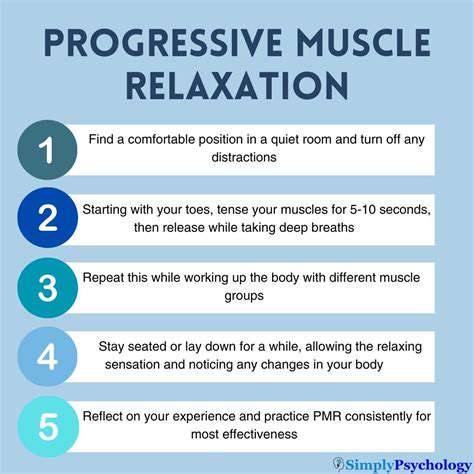Breathing Techniques to Calm Anxiety: What Works Well

Understanding Diaphragmatic Breathing
Diaphragmatic breathing, also known as abdominal breathing, is a technique that focuses on engaging the diaphragm, the primary muscle responsible for respiration. This method promotes a deeper, more efficient exchange of oxygen and carbon dioxide, leading to improved overall well-being. It's a crucial aspect of both physical and mental health and can be practiced by anyone, regardless of age or fitness level.
Diaphragmatic breathing is a fundamental skill for optimizing respiratory function. Proper engagement of the diaphragm allows for a larger volume of air to be inhaled and exhaled, maximizing oxygen intake and carbon dioxide elimination. This improved gas exchange is essential for physical performance and overall bodily function.
Benefits of Diaphragmatic Breathing
Implementing diaphragmatic breathing techniques offers a multitude of benefits. It can help to reduce stress and anxiety by calming the nervous system. The slow, controlled nature of the breaths can create a sense of calm and relaxation, making it a valuable tool for managing stress in daily life.
Furthermore, diaphragmatic breathing can positively impact cardiovascular health. By promoting deeper breaths, it encourages better blood oxygenation, which can contribute to a healthier heart and improved circulation.
Diaphragmatic Breathing and Stress Reduction
Stress and anxiety often manifest as shallow, rapid breathing patterns. Diaphragmatic breathing provides a counterbalance to this by encouraging slow, deep inhalations and exhalations. This deliberate regulation of breath can help to calm the body's fight-or-flight response, leading to a reduction in feelings of stress and anxiety.
How to Practice Diaphragmatic Breathing
Learning diaphragmatic breathing is straightforward. Find a comfortable seated or lying position, ensuring your spine is aligned. Place one hand on your chest and the other on your abdomen. Inhale deeply through your nose, allowing your abdomen to rise as your diaphragm expands. Exhale slowly through your mouth, feeling your abdomen fall.
Consistency is key to mastering this technique. Practicing diaphragmatic breathing regularly, even for just a few minutes a day, can yield significant benefits over time.
Diaphragmatic Breathing for Relaxation
The rhythmic nature of diaphragmatic breathing can induce a state of deep relaxation. This relaxation response activates the parasympathetic nervous system, which is responsible for calming the body and reducing the release of stress hormones.
Integrating diaphragmatic breathing into your daily routine can be a powerful tool for stress management and relaxation.
Diaphragmatic Breathing and Sleep Quality
Many individuals find that incorporating diaphragmatic breathing techniques into their nightly routine can improve the quality of their sleep. The slow, controlled breaths promote relaxation and calm the mind, preparing the body for restful sleep.
This relaxation can lead to a more consistent sleep cycle, reducing the likelihood of insomnia and promoting deeper, more restorative sleep.
Diaphragmatic Breathing and Physical Performance
Engaging in diaphragmatic breathing exercises can significantly enhance physical performance. By optimizing oxygen intake, it can help athletes improve endurance, stamina, and overall athletic output.
Furthermore, it can help to reduce muscle soreness and fatigue after intense physical activity.

Progressive Muscle Relaxation and Breathing: A Combined Approach

Progressive Muscle Relaxation: A Gentle Technique
Progressive muscle relaxation (PMR) is a technique that involves systematically tensing and relaxing different muscle groups in the body. This process helps to reduce physical tension and, consequently, accompanying mental stress and anxiety. By consciously tensing and releasing muscle groups, individuals can learn to identify and release physical tension that often accompanies stress, anxiety, and even physical pain.
The technique is rooted in the understanding that physical tension often accompanies mental stress. By focusing on the physical sensations of tension and release, individuals can learn to recognize and manage these internal responses, leading to a greater sense of calm and well-being.
Understanding the Mechanics of Muscle Tension
Muscle tension, whether it's from stress, anxiety, or physical exertion, can manifest in various ways. It can range from mild discomfort to significant pain and stiffness. Identifying these patterns is the first step to effectively managing them through progressive muscle relaxation.
Identifying the specific muscle groups that are habitually tense is crucial for a successful PMR practice. This awareness allows for targeted relaxation and a more profound sense of relief.
The Importance of Deep Relaxation
Deep relaxation, achieved through PMR, is a crucial component of stress reduction. It allows the body to release the physical and mental burdens of daily life. By practicing PMR regularly, individuals can learn to experience a more profound state of relaxation, which can significantly impact overall well-being.
This deep relaxation can have positive effects on both physical and mental health, contributing to improved sleep quality and reduced feelings of anxiety and stress.
Steps in Performing Progressive Muscle Relaxation
The process of progressive muscle relaxation involves a series of steps. First, find a comfortable and quiet place where you can lie down or sit without distractions. Then, systematically tense and release different muscle groups in your body, starting with your toes and moving up your body.
Benefits of Regular Practice
Regular practice of progressive muscle relaxation can offer numerous benefits. It can help manage stress and anxiety, improve sleep quality, and enhance overall well-being. It also helps in reducing pain associated with muscle tension, and can be a useful tool for managing chronic pain conditions.
By incorporating PMR into your daily routine, you can cultivate a greater sense of calm and control over your physical and emotional responses. The practice fosters self-awareness, allowing individuals to recognize and address their tension patterns.
Variations and Considerations
There are various ways to modify and adapt progressive muscle relaxation to suit individual needs. For example, you can use audio guides, or even tailor the techniques to specific areas of physical discomfort. It's important to consult with a healthcare professional or a certified therapist if you have any underlying medical conditions before starting PMR.
Listening to guided meditations and incorporating gentle stretching can further enhance the effectiveness of the practice, leading to a more holistic and comprehensive approach to relaxation and stress management.